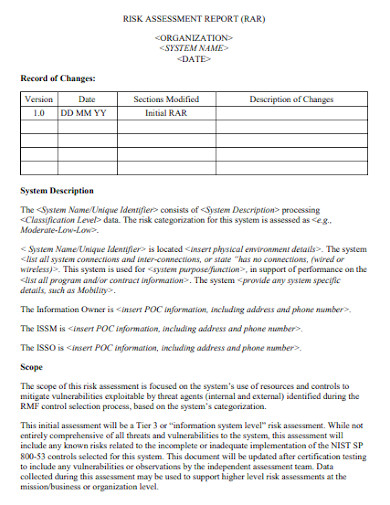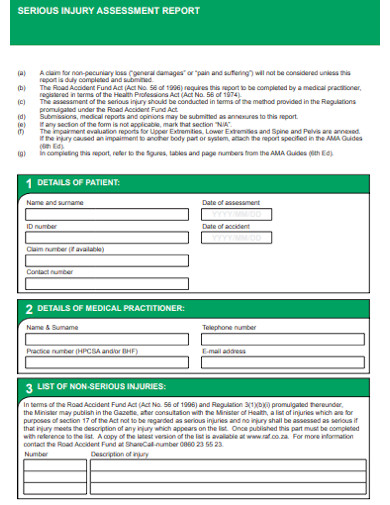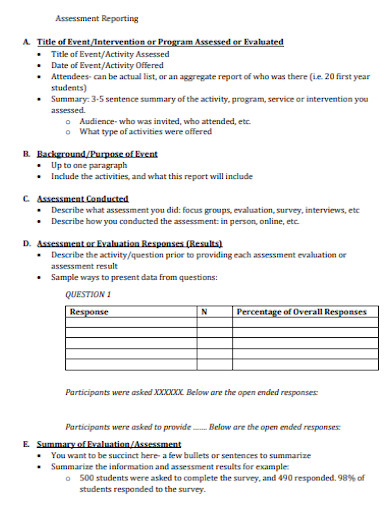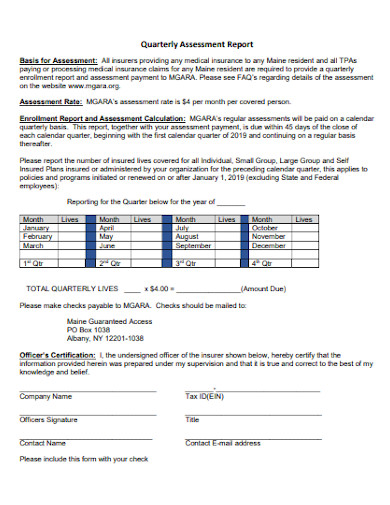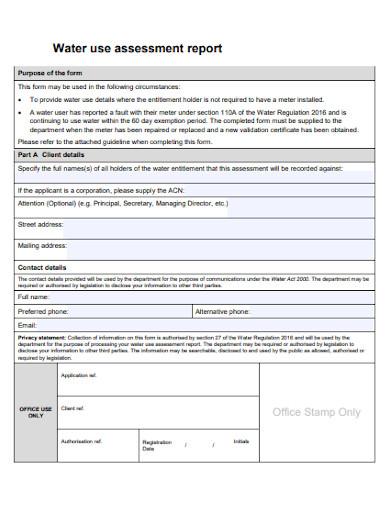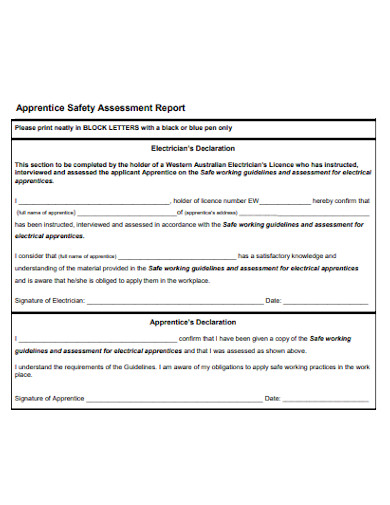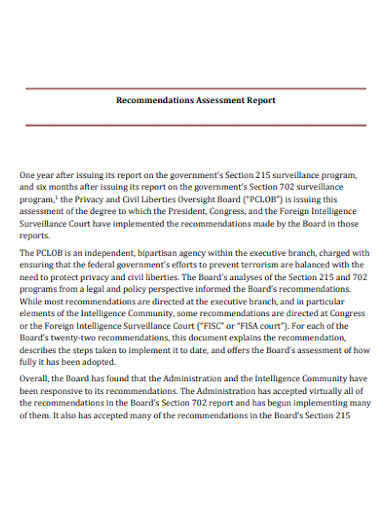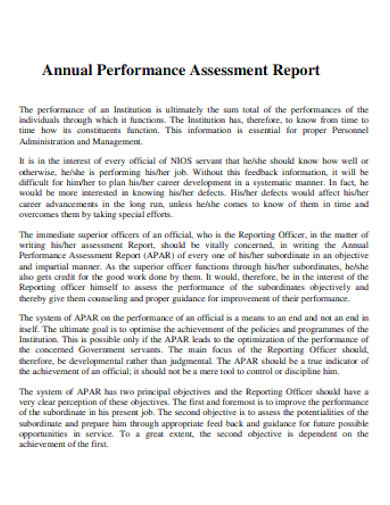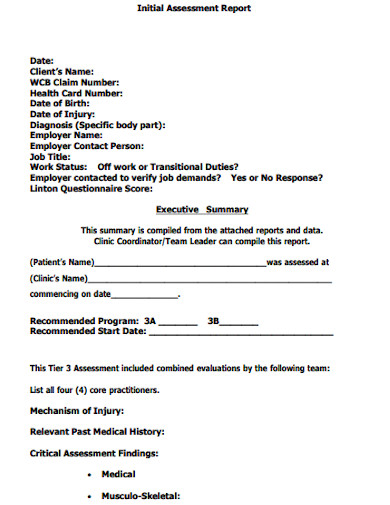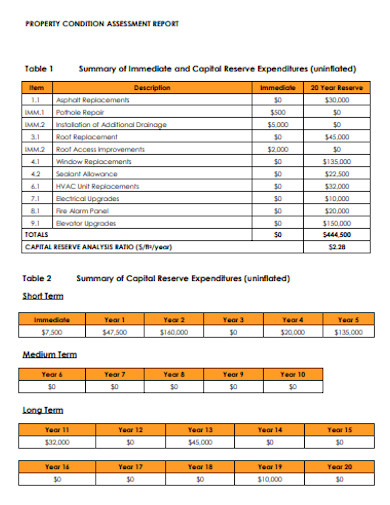10+ Assessment Report Examples to Download
The purpose of every assessment is to determine the level of performance and interest based on a certain situation, activity or acquired risk. Team leaders or higher ranked officers would often require you to submit an assessment report. How are you going to do it? How can you make a good assessment report? This article would let you go over the details about creating an easy yet concise report.
10+ Assessment Report Examples
1. Risk Assessment Report
2. Serious Injury Assessment Report
3. Assessment Evaluation Report
4. Quarterly Assessment Report
5. Water Use Assessment Report
6. Apprentice Safety Assessment Report
7. Recommendations Assessment Report
8. Annual Performance Assessment Report
9. Initial Assessment Report
10. Property Condition Assessment Report
11. Water Assessment Report
What is an Assessment Report?
An assessment report is a type of written document that contains the details about what you have assessed, an explanation and its recommendation.
In making an assessment report, you don’t have to put jargons. Using plain English language is enough. Spell out the acronyms and keep your report simple but straight to the point. Assessment reports should also be written in the past tense form.
Assessment reports require recommendations and requirements. For recommendations, use the word “should”. For the requirements, use the word “must”.
Recommendation example:
Candidates should read their assessment report before submitting it.
Requirement example:
Candidates must provide an explanation of the test results.
What are the Contents of an Assessment Report?
– Objectives of the assessment
– The experience of the candidate
– Assessment test results
– Explanation of the test results
– Possible disagreement of the interpretation of the test results
– Development action
Here is an example of an assessment report:
Aim of the interview:
This report presents a synthesis of the results obtained upon the completion of the MangerPro questionnaire, as well as the information gathered during the subsequent assessment interview. It incorporates the position held by the candidate at the moment of the assessment and consists of the following parts:
- Synthesis
This synthesis presents the contents of the interview with the participant while preserving any data related to the person’s private sphere. It presents in a few words how the person will tend to act and interact in a professional context.
- Strengths / Weaknesses
This part lists both the assets and limits of the person’s potential in relation to his/her professional environment.
- Development plan proposal
This part summarizes the different development steps that may be taken in order for the person to be successful in the position. These actions may be implemented at two levels: through personal initiatives and training programs.
Personal data:
Family name: Wiseman
First name: Salomon
Age: 33
Professional experience: 12 years
Present job title: Junior Project Manager
Reminder: the validity of this report’s contents is of 12 to 18 months, insofar as no major professional or personal change intervenes. Past this limit, the margin of error applicable to the test’s results (reliability) may lead to significant inaccuracies in the appreciation of the participant’s potential.
SYNTHESIS
With a strong professional background in the area of semi-conductor materials, Mr. Salomon Wiseman is an enterprising person who displays dynamism and reliability and who “holds on” until results are achieved. Moreover, also he joined the company only recently and with little managerial experience, he appears to possess a management potential that is quite significant.
Attentive to all that can help him raise his level of efficiency, Mr. Wiseman makes use of his listening skills to gather the proposals of his team members. Moreover, he displays a strong ability to trust others for the completion of their tasks and is careful to delegate according to each person’s abilities.
Mr. Wiseman also appears as an excellent mediator when the communication becomes difficult among his staff, as he assumes that each person has their reasons for reacting to this or that situation.
Thanks to his sense of initiative and dynamism, he is always ready to implement new projects and new business processes. In doing so, he always favors compromise and discussion over imposing his choices forcefully, in order to obtain the adhesion of his people. Endowed with a strong relational dimension, Mr. Wiseman would however gain from developing his ability to make a decision when faced with the indecisiveness of his team. This would allow him to better rally the energies of his team, which would contribute to strengthening his charisma and further increasing collective efficiency.
Finally, his ability to act and react rapidly would be strengthened if he also took the time to analyze the situation first, in order to profit from his past experiences. This would allow him to strengthen his ability to deliver a facts-based argumentation in order to rally the team to his point of view. As a consequence, his autonomy would also be strengthened.
Strengths:
- His very strong technical skills
- His dynamism
- His reliability, his willingness to achieve the goals
- His strong relational dimension and his listening skills
- His ability to structure the team’s work
- His ability to organize and coordinate the team
- His strong potential for a participative management style
Weaknesses:
- His relatively low level of autonomy
- Sometimes too tolerant; there is a risk that others take advantage of it
- A difficulty to make decisions when there are disagreements
- A tendency to sometimes forget to analyze the situation before acting (due to his search for efficiency)
Development proposals:
Personal level:
– Daring to make a decision even when there are disagreements within the team; becoming aware that deadlocks can represent a significant source of stress for him given his sense for action and his willingness to achieve results.
– Becoming aware of the fact that he can have a tendency to do himself the work of others when he is not satisfied with it. He should learn to set development goals to his people and control their progress.
– Daring to negotiate when the hierarchy’s demands are too high in comparison to the resources allocated to him.
Training:
– Assertiveness
– Negotiation skills
– Management techniques (in particular: goal-setting and control)
Individual Potential Assessment Sample.
What is the difference between a recommendation and a requirement?
Recommendation is a suggestion on what needs to be improved while a requirement is something that is compulsory.
Who is entitled to inspect an assessment report first?
The candidate is the one entitled to inspect an assessment report.
Does the candidate have the right to forward or hold the report?
The candidate has his or her right to forward or hold a report.
What is the difference between a recommendation and a requirement?
Recommendation is a suggestion on what needs to be improved while a requirement is something that is compulsory.
Who is entitled to inspect an assessment report first?
The candidate is the one entitled to inspect an assessment report.
Does the candidate have the right to forward or hold the report?
The candidate has his or her right to forward or hold a report.
Same as other reports, assessment reports need to follow a specific format. Every detail should also be specific.



